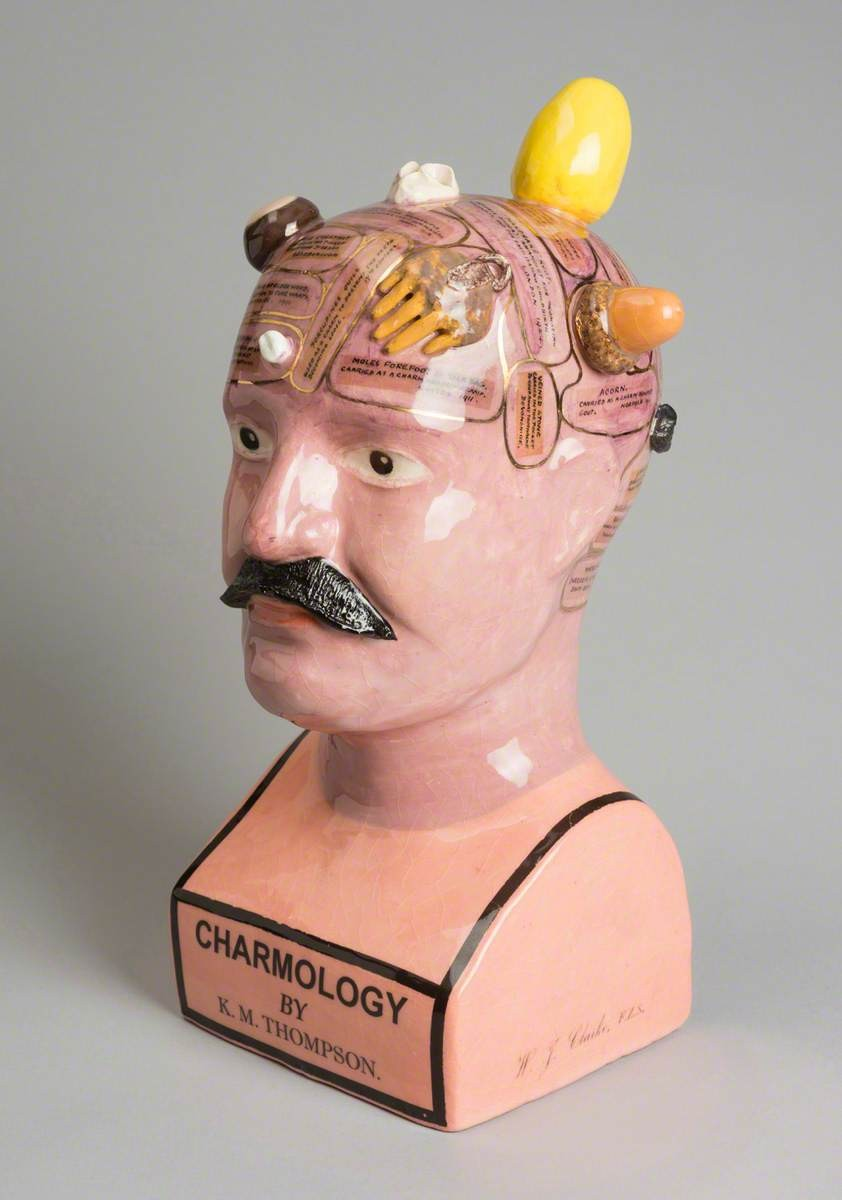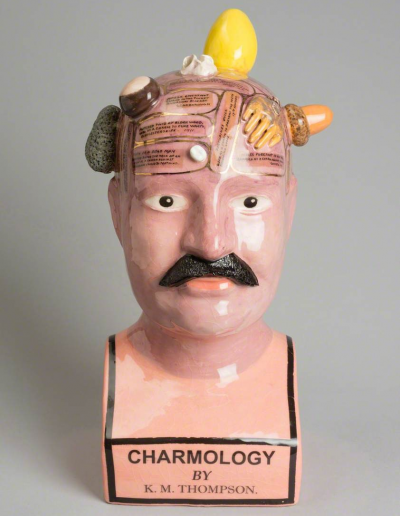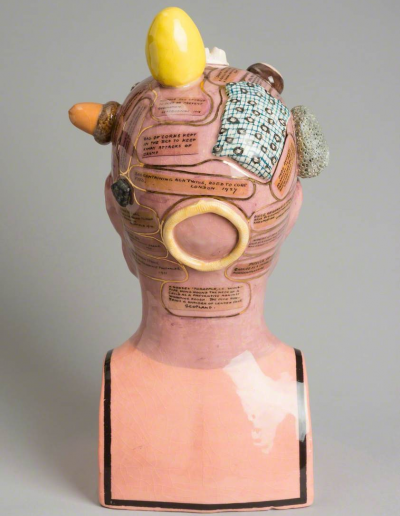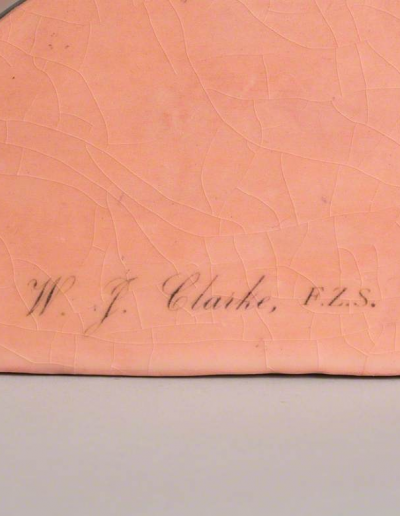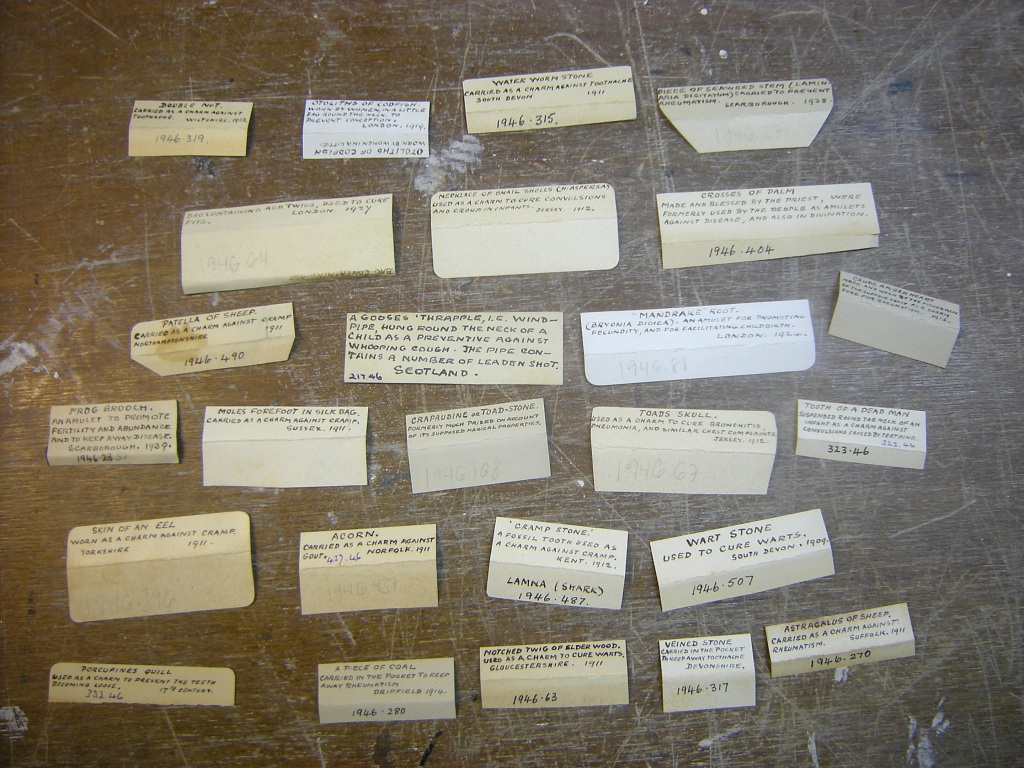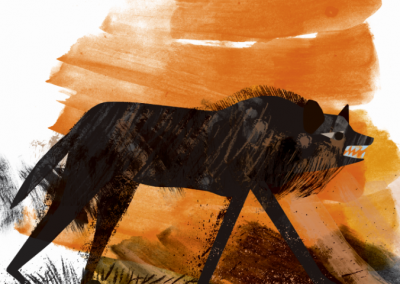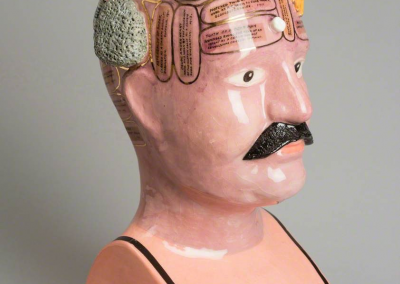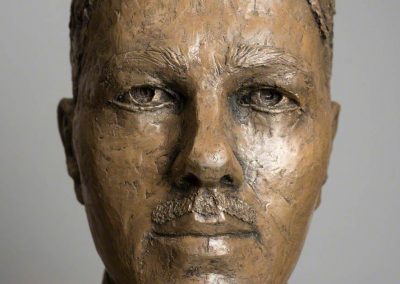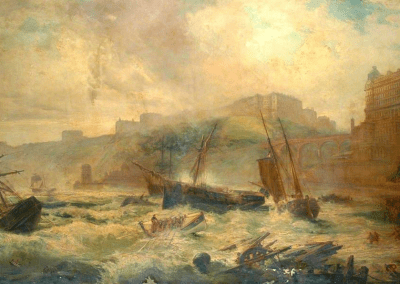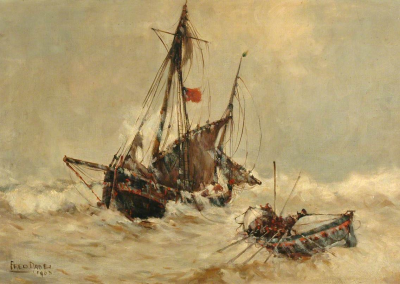‘Charmology Head’ by Karen Thompson
Scarborough Art Gallery
This unusual ceramic bust was created by contemporary artist Karen Thompson. It was developed from a commission to create an artwork which took inspiration from the William Clarke Charm Collection at Scarborough Museums and Galleries.
The bust itself is based on images of William Clarke. Born in Scarborough in 1868, Clarke developed an early interest in the natural world, later becoming a founding member of the Scarborough Field Naturalists. The folk charms he collected were believed to cure ailments and bring luck and protection.
The head is adorned with representations of a range of the charms, positioned at various places across the skull in a way that deliberately echoes late Victorian ‘phrenology’ heads. At that time, some scientists and physicians believed that the shape and size of a person’s cranium gave indications of their characteristics and mental capacity.
It shows a meeting of one different ways of thinking about medicine in the late Victorian era, one using charms for healing and the other showing the scientific profession’s misguided diagnoses based on misunderstandings of the human body. Neither are part of modern medical practices.
Thompson made this bust from a mould and has subsequently used the mould to create other heads, including the tureens she discusses in the video below.
Developing a range of ideas
Thompson used details such as the hand-written labels belonging to William Clarke to develop her artwork further.
Watch The Video With Subtitles
‘Porcelain Sandwiches’ by Karen Thompson
Crafts Council Handling Collection
As well as exploring sometimes serious and political issues, Karen Thompson’s art is often quite playful in approach,
In 2014, she produced 300 porcelain ‘flat white bread’ sandwiches as part of ‘York Curiouser 2014’. The sandwiches were sited on benches and walls around the city of York, at the Treasurer’s House Gardens, Yorkshire Museum Gardens, St. Anthony’s Gardens, Kings Manor and on the City Walls.
They were left for the public to find and interact with, a playful reference to the packed lunches tourists bring with them whilst visiting heritage cities. Some of the sandwiches are now part of the Crafts Council handling collection.
Charmology Head
Do you like the idea of making portrait busts that are playful, with removeable parts, like Thompson’s?
Which bust is your favourite?
Thompson modelled her busts on a portrait of the Victorian collector William Clarke, but who would you model one on?
What did you find surprising about this work of art?
Do you like the artwork? Why / why not?
Vocabulary
Cranium: the part of the skull enclosing the brain
Phrenology: the pseudo-scientific study of the shape of the cranium in order to determine a person’s character and mental abilities, now discredited
Artistic commission: when an artist is paid to produce a custom-made work of art
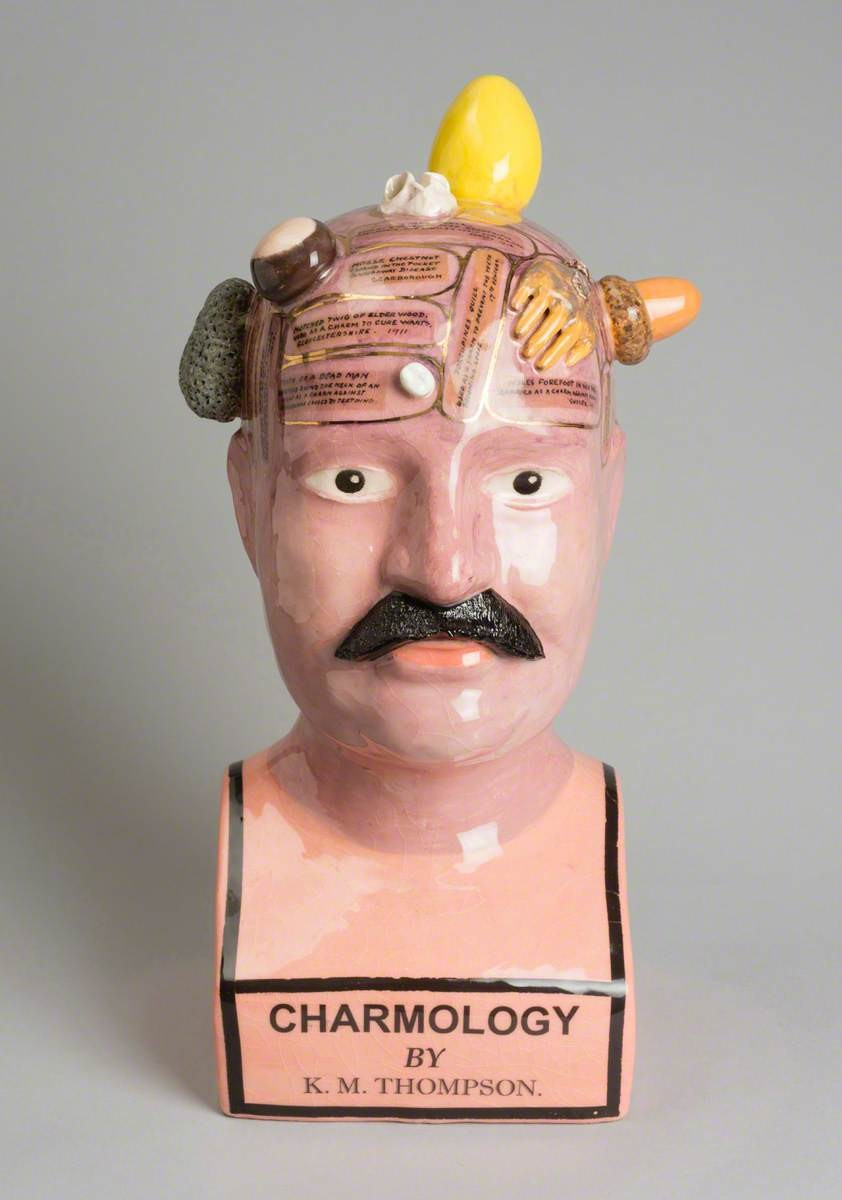
Porcelain Sandwiches
Why do you think some people feel that it is important to have art in public spaces?
Do you like to encounter art and creativity when you are out and about? Can you think of any examples of art you have encountered in this way?
What would your reaction be if you found one of Karen Thompson’s sandwiches whilst out?
Do you think finding a sandwich like this would encourage you to chat to other members of the public about it?

Design your own
What sort of portrait bust would you design? Would it have a drawer in it, or a head that comes off? Would it have a practical function? What could it be wearing?
Role-play
Improvise a scene in pairs – imagine finding a porcelain sandwich whilst out for a walk with a friend. How would you both react? What would you do with the sandwich? This scene could be acted as mime, without any words.
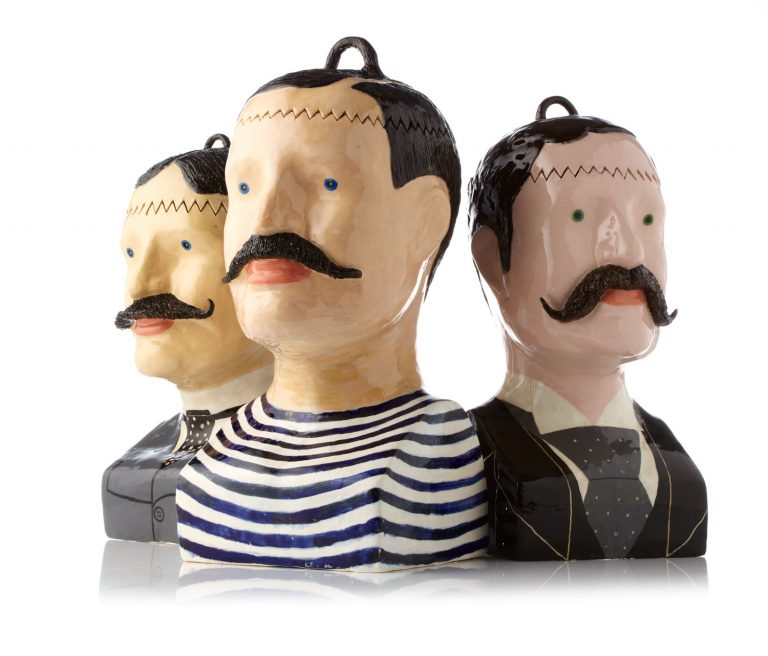
Hands on History
Find more artworks by ceramic artist and illustrator Karen Thompson on her website.
Find more unusual artwork at galleries near you. You can explore more of the collection at Scarborough Museums and Galleries on their website too.
Schools and groups can borrow artworks from the Crafts Council handling collection.
Museum Location
Explore more artworks from Scarborough Art Gallery

